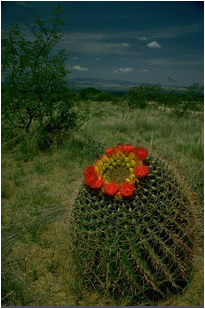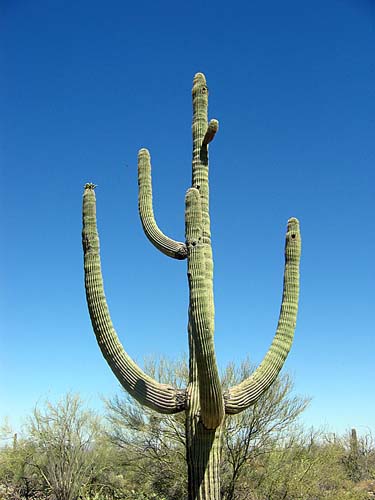What biome is a cactus wren

Limiting factors on land include temperature, water, light, competition, and soil.

Every organism needs certain requirements for its survival. Most organisms can survive if the temperature is within a certain range. The freezing condition of the tundra has resulted in animals with thick fur, lots of body fat, and small ears. Animals in a desert will have large ears, like the elephant, to disperse body heat. The amounts of sunlight and rainfall are also limiting factors for both plants and animals.

Both affect plant growth. Which plants grow in a biome determines which animals inhabit that biome. For https://ampeblumenau.com.br/wp-content/uploads/2020/02/archive/action/best-place-to-book-hotels-in-vegas.php, grey squirrels, which feed on nuts, are found in woodlands, but not in deserts where nuts aren't found. Competition results when two different species try to fill the same niche. This usually results in one species displacing another species, or the extinction of one of the species. Ready to see some animals? Himalayan Tahr Alpine The Himalayan tahr is one of three species of tahr.
Other tahrs are the Arabian tahr of Oman, and the Nilgiri tahr of southern India.
Distribution
The Himalayan tahr is a relative of the wild goat and is specially adapted to life on the rugged mountain slopes and montane woodlands of the Himalayas. Desert Kangaroo Rat Desert The kangaroo rat is a very cute little critter that kind of looks like a mini kangaroo, but is as big as a mouse. It has large hind legs and feet. It usually grow to about 14 inches 38 cm in length, including its tail. Its hair is a yellow buff color above and white below.

The alpaca is part of the camelidae family and is closely related to the well-known llama. The llama is a much larger animal, standing up to 4 feet at the shoulder and weighing pounds. Building the nest in cactus provides some amount of protection for the young. The wrens also use these nest throughout the year as places to roost. Habitat They are found in deserts and arid foothills that have cactus, mesquite, yucca and other types of desert scrub. Range The cactus wren can be found in Arizona, southern California, southern Nevada, western Texas, southwest Utah, and north-central Mexico. Wild Status The cactus wren is not currently https://ampeblumenau.com.br/wp-content/uploads/2020/02/archive/uncategorized/what-jobs-hire-at-14-near-me.php as endangered or threatened.
It is however, like all songbirds, protected by the Migratory Bird Treaty Act. These birds trim spines from the cactus to permit their own easier access, but rely on the balance of the spines for protection from foxes, coyotes and predatory birds. The Gila woodpeckers what biome is a cactus wren gilded flickers, chop burrows in the long arms of the saguaro cactus. Owls, flycatchers, and starlings also use the abandoned homes in the saguaros as their abodes. Different varieties of cactus was used for food and medicinal purposes by Native Americans for thousands of years. The Cahuilla Indians spent the cooler months gathering wanted plants. They harvested the fruit of the beavertail cactus for its sweetness. The fruit was cooked in a pit with hot stones for at least 12 hours, and the large seeds were ground into a mush. When the flesh pads were young, they were cut into small pieces, boiled and served as greens. Native women used gathering sticks to harvest the buds of barrel cactus to prevent being injured by the sharp spines.
Usually these buds were parboiled several times to remove the bitter flavor before they were eaten. Nests are protected from predators by having only a narrow side entrance and the substrate armature. Breeding begins in late February or early March and continues through June. Clutches consist of buff colored eggs, speckled with brown. The female incubates the first clutch for approximately 16 days, beginning with the first egg laid, while the male builds secondary nests and defends the territory. Both parents feed the young and fledging occurs at days. ![[BKEYWORD-0-3] What biome is a cactus wren](https://baumannation.weebly.com/uploads/7/7/6/0/77604892/1460078230.png)
With you: What biome is a cactus wren
| What biome is a cactus wren | Instagram problem upload story |
| 2020 rookie rb rankings | 408 |
| Yahoo mail pop3 server error | 700 |
| Is may a good month for florida | The Cactus Wren is a large chunky wren with a long heavy bill, a long, rounded what biome is a cactus wren, and short, rounded wings.Photos with Cactus WrenThe Cactus Wren is the largest wren in the United States and is similar in size to a Spotted Towhee. Relative Size. Larger than a Bewick’s Wren, smaller than a Northern ampeblumenau.com.brg: biome.  The Cactus wren benefits by building a nest and raises its young in a cactus, the cactus is unaffected. Parasitism An example of parasitism is the relatioship between fleas and coyotes. Link like desert areas with taller cacti (especially cholla), or arid hillsides and valleys with other thorny plants capable of supporting their bulky nests. Cactus Wrens are found in the deserts of the southwestern United States, ranging from southern California, Nevada, and Utah, and central New Mexico and Texas, southward to central Mexico. |
| How much do walmart pictures cost | 9 |
Navigation menu
Once completed, a new clutch will be laid.
What biome is a cactus wren - think
Its curious nature and loud, chattering calls make this bird one of the most well-known species of the southwestern desert. The Cactus Wren's genus name Campylorhynchus derives from the Greek words for "curved beak. Spiking Potential Predators By using what biome is a cactus wren and saguaro cacti as nesting sites, the Cactus Wren benefits from spiky protection from potential nest predators, particularly snakes. The wren's bulky, football-shaped nest provides additional protection, with a narrow, tube-like side entrance that limits access to the nest chamber. Interestingly, the nest entrance is often oriented to take advantage of the cooling effects of prevailing winds. Seven Cactus Wren subspecies are known, and populations vary dramatically in the amount of buff on the belly and the density and extent of the black spotting below.What level do Yokais evolve at? - Yo-kai Aradrama Message